The non-metallic materials used in automobiles include plastics, rubber, adhesive sealants, friction materials, fabrics, glass, and other materials. These materials involve various industrial sectors such as petrochemicals, light industry, textiles, and building materials. Therefore, the application of non-metallic materials in automobiles is a reflection of the combined economic and technological strength, and it also encompasses a wide range of technology development and application capabilities in related industries.
Currently, the glass fiber reinforced composite materials applied in automobiles include glass fiber reinforced thermoplastics (QFRTP), glass fiber mat reinforced thermoplastics (GMT), sheet molding compounds (SMC), resin transfer molding materials (RTM), and hand-laid FRP products.
The main glass fiber reinforced plastics used in automobiles currently are glass fiber reinforced polypropylene (PP), glass fiber reinforced polyamide 66 (PA66) or PA6, and to a lesser extent, PBT and PPO materials.
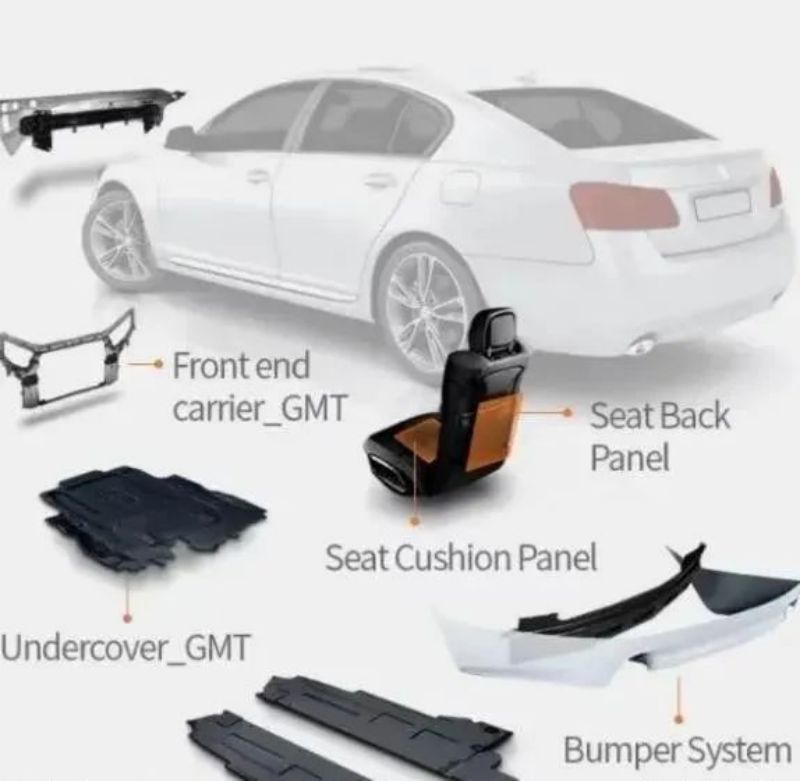
Reinforced PP (polypropylene) products possess high rigidity and toughness, and their mechanical properties can be improved several times, even multiple times. Reinforced PP is used in areas such as office furniture, for instance in children’s high-back chairs and office chairs; it is also used in axial and centrifugal fans within refrigeration equipment like refrigerators and air conditioners.
Reinforced PA (polyamide) materials are already used in both passenger and commercial vehicles, typically for manufacturing small functional parts. Examples include protective covers for lock bodies, insurance wedges, embedded nuts, throttle pedals, gear shift guards, and opening handles. If the material chosen by the part manufacturer is of unstablequality, the manufacturing process is inappropriate, or the material is not properly dried, it can lead to the fracture of weak parts in the product.
With the automotive industry’s increasing demand for lightweight and environmentally friendly materials, foreign automotive industries are leaning more towards using GMT (glass mat thermoplastics) materials to meet the needs of structural components. This is mainly due to GMT’s excellent toughness, short molding cycle, high production efficiency, low processing costs, and non-polluting nature, making it one of the materials of the 21st century. GMT is primarily used in the production of multifunctional brackets, dashboard brackets, seat frames, engine guards, and battery brackets in passenger vehicles. For example, the Audi A6 and A4 currently produced by FAW-Volkswagen use GMT materials, but have not achieved localized production.
To improve the overall quality of automobiles to catch up with international advanced levels, and to achieve weight reduction, vibration reduction, and noise reduction, domestic units have conducted research on the production and product molding processes of GMT materials. They have the capacity for mass production of GMT materials, and a production line with an annual output of 3000 tons of GMT material has been built in Jiangyin, Jiangsu. Domestic car manufacturers are also using GMT materials in the design of some models and have begun batch trial production.
Sheet molding compound (SMC) is an important glass fiber reinforced thermosetting plastic. Due to its excellent performance, large-scale production capability, and ability to achieve A-grade surfaces, it has been extensively used in automobiles. Currently, the application offoreign SMC materials in the automotive industry has made new progress. The major use of SMC in automobiles is in body panels, accounting for 70% of SMC usage. The fastest growth is in structural components and transmission parts. In the next five years, the use of SMC in automobiles is expected to increase by 22% to 71%, while in other industries, the growth will be 13% to 35%.
Application Status and Development Trends
1.High-content glass fiber reinforced sheet molding compound (SMC) is increasingly being used in automotive structural components. It was first demonstrated in structural parts on two Ford models (Explorer and Ranger) in 1995. Due to its multifunctionality, it is widely considered to have advantages in structural design, leading to its widespread application in automotive dashboards, steering systems, radiator systems, and electronic device systems.
The upper and lower brackets molded by the American company Budd utilize a composite material containing 40% glass fiber in unsaturated polyester. This two-piece front-end structure meets user requirements, with the front end of the lower cabin extending forward. The upper bracket is fixed on the front canopy and the front body structure, while the lower bracket works in conjunction with the cooling system. These two brackets are interconnected and cooperate with the car canopy and body structure to stabilize the front end.
2. The application of low-density Sheet Molding Compound (SMC) materials: Low-density SMC has a specific gravity of 1.3, and practical applications and tests have shown that it is 30% lighter than standard SMC, which has a specific gravity of 1.9. Using this low-density SMC can reduce the weight of parts by about 45% compared to similar parts made of steel. All inner panels and new roof interiors of the Corvette ’99 model by General Motors in the USA are made of low-density SMC. Additionally, low-density SMC is also used in car doors, engine hoods, and trunk lids.
3. Other applications of SMC in automobiles, beyond the new uses mentioned earlier, include the production of various other parts. These include cab doors, inflatable rooftops, bumper skeletons, cargo doors, sun visors, body panels, roof drainage pipes, car shed side strips, and truck boxes, among which the largest usage is in exterior body panels. Regarding domestic application status, with the introduction of passenger car production technology in China, SMC was first adopted in passenger vehicles, mainly used in spare tire compartments and bumper skeletons. Currently, it is also applied in commercial vehicles for parts like strut room cover plates, expansion tanks, line speed clamps, large/small partitions, air intake shroud assemblies, and more.
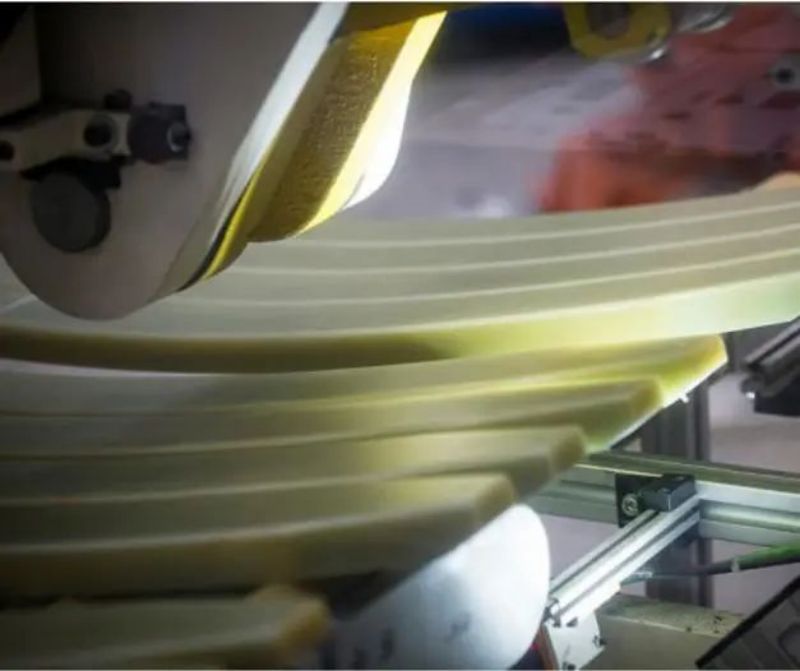
GFRP Composite MaterialAutomotive Leaf Springs
The Resin Transfer Molding (RTM) method involves pressing resin into a closed mold containing glass fibers, followed by curing at room temperature or with heat. Compared to the Sheet Molding Compound (SMC) method, RTM offers simpler production equipment, lower mold costs, and excellent physical properties of the products, but it is only suitable for medium and small-scale production. Currently, automotive parts produced using the RTM method abroad have been extended to full-body coverings. In contrast, domestically in China, the RTM molding technology for manufacturing automotive parts is still in the development and research stage, striving to reach the production levels of similar foreign products in terms of raw material mechanical properties, curing time, and finished product specifications. The automotive parts developed and researched domestically using the RTM method include windshields, rear tailgates, diffusers, roofs, bumpers, and rear lifting doors for Fukang cars.
However, how to more quickly and effectively apply the RTM process to automobiles, the requirements of materials for product structure, the level of material performance, evaluation standards, and the achievement of A-grade surfaces are issues of concern in the automotive industry. These are also the prerequisites for the widespread adoption of RTM in the manufacturing of automotive parts.
Why FRP
From the perspective of automobile manufacturers, FRP (Fiber Reinforced Plastics) compared to other materials, is a very attractive alternative material. Taking SMC/BMC (Sheet Molding Compound/Bulk Molding Compound) as examples:
* Weight savings
* Component integration
* Design flexibility
* Significantly lower investment
* Facilitates the integration of antenna systems
* Dimensional stability (low coefficient of linear thermal expansion, comparable to steel)
* Maintains high mechanical performance under high temperature conditions
Compatible with E-coating (electronic painting)
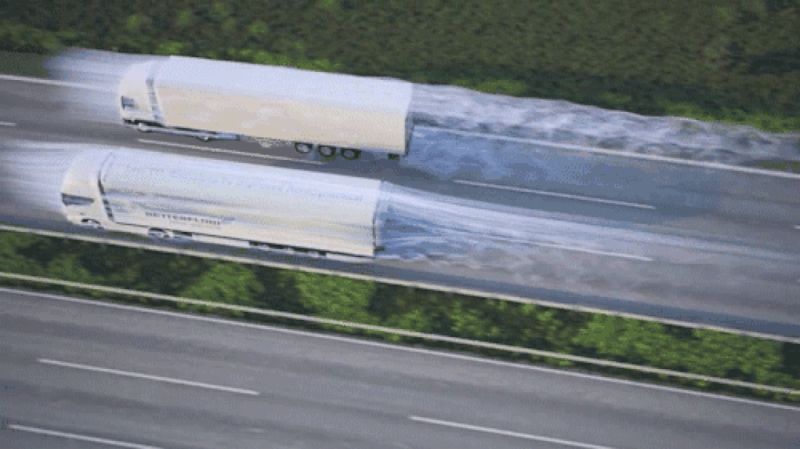
Truck drivers are well aware that air resistance, also known as drag, has always been a significant adversary for trucks. The large frontal area of trucks, high chassis, and squarely shaped trailers make them particularly susceptible to air resistance.
To counteractair resistance, which inevitably increases the engine’s load, the faster the speed, the greater the resistance. The increased load due to air resistance leads to higher fuel consumption. To reduce the wind resistance experienced by trucks and thereby lower fuel consumption, engineers have racked their brains. In addition to adopting aerodynamic designs for the cabin, many devices have been added to reduce the air resistance on the frame and the rear part of the trailer. What are these devices designed to reduce wind resistance on trucks?
Roof/Side Deflectors
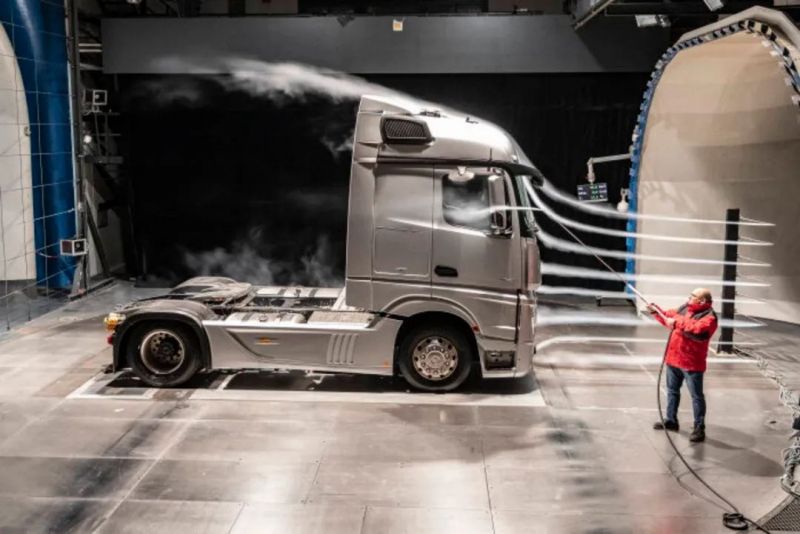
The roof and side deflectors are primarily designed to prevent the wind from directly hitting the square-shaped cargo box, redirecting most of the air to smoothly flow over and around the upper and side parts of the trailer, rather than directly impacting the front of the trailer, which causes significant resistance. Properly angled and height-adjusted deflectors can greatly reduce the resistance caused by the trailer.
Car Side Skirts
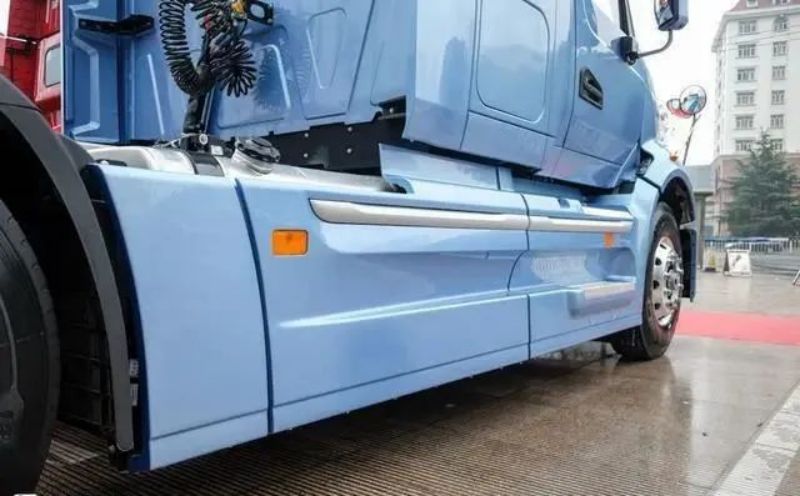
Side skirts on a vehicle serve to smooth out the sides of the chassis, integrating it seamlessly with the body of the car. They cover elements like side-mounted gas tanks and fuel tanks, reducing their frontal area exposed to the wind, thus facilitating smoother airflow without creating turbulence.
Low-positioned Bumper
The downward-extending bumper reduces the airflow entering beneath the vehicle, which helps in decreasing the resistance produced by the friction between the chassis and theair. Additionally, some bumpers with guide holes not only reduce wind resistance but also direct airflow towards the brake drums or brake discs, aiding in the cooling of the vehicle’s braking system.
Cargo Box Side Deflectors
The deflectors on the sides of the cargo box cover part of the wheels and reduce the distance between the cargo compartment and the ground. This design decreases the airflow entering from the sides beneath the vehicle. Because they cover part of the wheels, these deflectors also reduce the turbulence caused by the interaction between the tires and the air.
Rear Deflector
Designed to disrupt the air vortices at the rear, it streamlines the airflow, thereby reducing aerodynamic drag.
So, what materials are used to make the deflectors and covers on trucks? From what I’ve gathered, in the highly competitive market, fiberglass (also known as glass-reinforced plastic or GRP) is favored for its lightweight, high strength, corrosion resistance, and reliability among other properties.
Fiberglass is a composite material that uses glass fibers and their products (like glass fiber cloth, mat, yarn, etc.) as reinforcement, with synthetic resin serving as the matrix material.
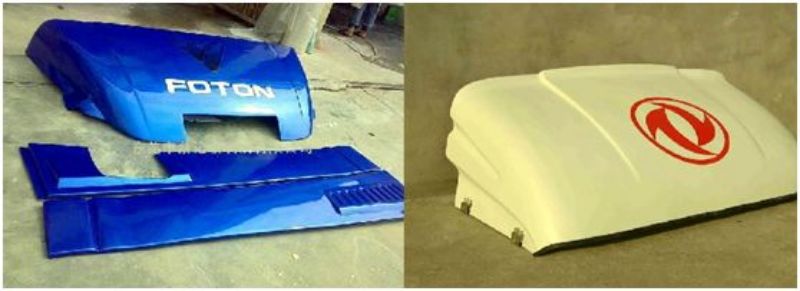
Fiberglass Deflectors/Covers
Europe began using fiberglass in automobiles as early as 1955, with trials on STM-II model bodies. In 1970, Japan used fiberglass to manufacture decorative covers for car wheels, and in 1971 Suzuki made engine covers and fenders from fiberglass. In the 1950s, the UK started using fiberglass, replacing the previous steel-wood composite cabins, like those in the Ford S21 and three-wheeled cars, which brought a completely new and less rigid style to the vehicles of that era.
Domestically in China, some manufacturers have done extensive work in developing fiberglass vehicle bodies. For example, FAW successfully developed fiberglass engine covers and flat-nosed, flip-top cabins quite early on. Currently, the use of fiberglass products in medium and heavy trucks in China is quite widespread, including long-nosed enginecovers, bumpers, front covers, cabin roof covers, side skirts, and deflectors. A well-known domestic manufacturer of deflectors, Dongguan Caiji Fiberglass Co., Ltd., exemplifies this. Even some of the luxurious large sleeper cabins in admired American long-nose trucks are made of fiberglass.
Lightweight, high-strength, corrosion-resistant, widely used in vehicles
Due to its low cost, short production cycle, and strong design flexibility, fiberglass materials are widely used in many aspects of truck manufacturing. For instance, a few years ago, domestic trucks had a monotonous and rigid design, with personalized exterior styling being uncommon. With the rapid development of domestic highways, which greatly stimulated long-haul transportation, the difficulty in forming personalized cabin appearances from whole steel, high mold design costs, and issues like rust and leaks in multi-panel welded structures led many manufacturers to choose fiberglass for cabin roof covers.
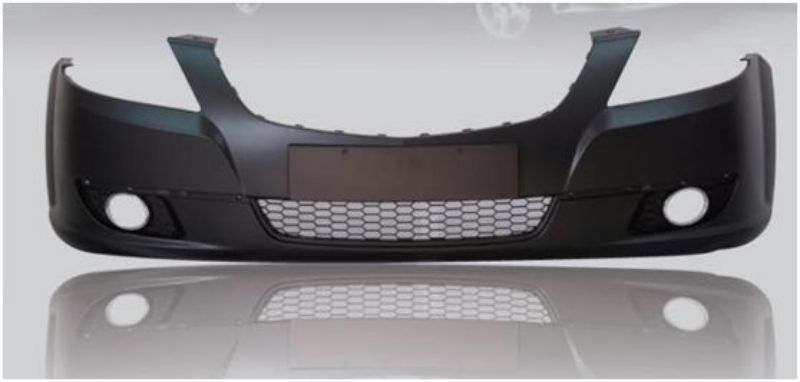
Currently, many trucks use fiberglass materials for front covers and bumpers.
Fiberglass is characterized by its lightweight and high strength, with a density ranging between 1.5 and 2.0. This is only about a quarter to a fifth of the density of carbon steel and even lower than that of aluminum. In comparison to 08F steel, a 2.5mm thick fiberglass has astrength equivalent to 1mm thick steel. Additionally, fiberglass can be flexibly designed according to needs, offering better overall integrity and excellent manufacturability. It allows for a flexible choice of molding processes based on the shape, purpose, and quantity of the product. The molding process is simple, often requiring only a single step, and the material has good corrosion resistance. It can resist atmospheric conditions, water, and common concentrations of acids, bases, and salts. Therefore, many trucks currently use fiberglass materials for front bumpers, front covers, side skirts, and deflectors.
Post time: Jan-02-2024




